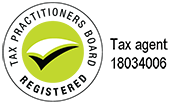Business Alert – End of Financial Year Payroll for your Business
End of Financial Year Payroll for your Business
Well it’s here again… it’s that time of year where payroll needs to be finalised. Don’t freak out; simply check out our pointers below for an easy, breezy beautiful payroll year end.
1. Finish any pay runs that need to be included in the 2017/2018 financial year. The payment date is key here. If earnings should be included in this financial year, make sure they’re paid with a payment date of 30 June 2018 or earlier.
2. Double check all employees details in your system are updated; addresses, contact details, DOB’s and TFN’s. Check the details of employees who no longer work for you including their end date and current addresses.
3. Reconcile total gross wages paid between the Profit and Loss and PAYG Payment Summaries. When you lodge the BAS for June, make sure the total wages reported on the BAS’s agrees to the PAYG Summary forwarded to the ATO. Doing this now will hold off audit activity later.
4. Complete a PAYG Payment Summary for every individual who has worked for you in the past 12 months; even those who worked for a short time; you will need to complete a PAYG Payment Summary for all. The deadline for this is the 14th of July so don’t put it off. Once you have completed these, don’t forget to complete the Annual PAYG Payment Summary Statement which collates all individuals for your company.
5. Back up your files and store in ‘year’ payroll folder. It’s always a good idea to have your backup stored in a different location to your business.
6. While finalising pay runs, why not send off the SGC payment for the June quarter as well; it’s due 28 July 2018 so it makes sense to do it together.
All done? Congratulations, you’ve crushed it! Bring on 2018/2019.
The post Business Alert – End of Financial Year Payroll for your Business appeared first on Clear Vision Accountancy Group.





